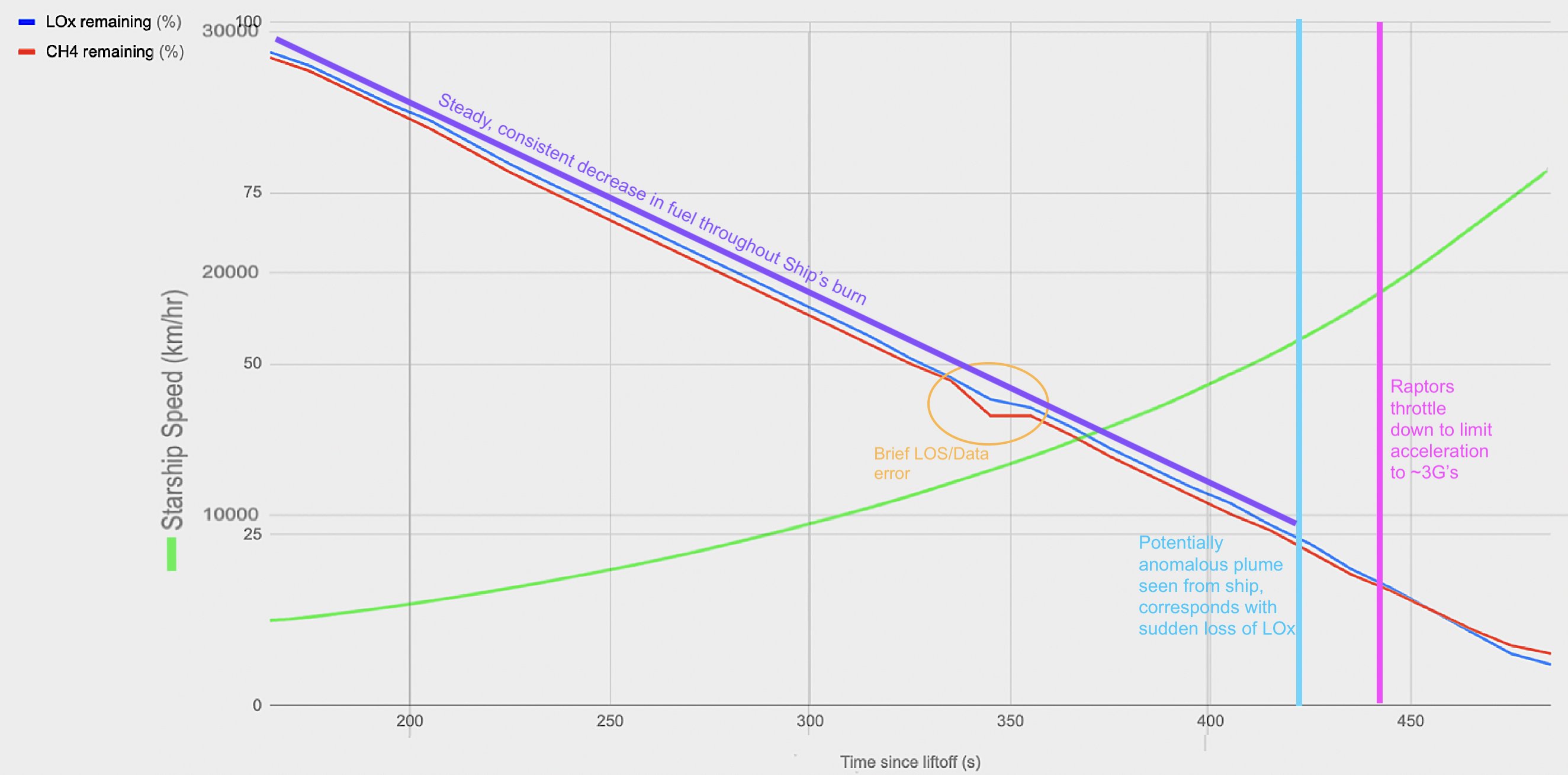I watched
the footage again. The venting started on the left and was sustained. Later, there's a puff on the right, and then all the venting stops. LOX and CH4 use seems to stabilize, but then they shut down the engines and trigger the FTS shortly afterwards. Note that the ship was accelerating right until engine shutdown. I didn't do any numbers to see if the acceleration was dropping off. I'm assuming that the engines were nominal.
The part that bothers me is that it appears to vent from opposite sides. That makes no sense because the QD and vents are on one side.
Come to think of it, it would take some pretty catastrophic autogenous pressurization failure to dump that much LOX.
As I have too much time on my hands, I tried to calculate the oxygen loss rate from the video. Here's the timeline I came up with
| Timestamp | Oxygen loss/burn rate | |
| 5:32 | 2.72 tons/second | Stable flight |
| 7:07 | 2.61 tons/second | Throttled down, venting starts |
| 7:40 | 3.06 tons/second | Puff on right, but still venting |
| 7:55 | 3.06 tons/second | Venting stops |
If correct, then it was venting nearly a half ton of oxygen per second. Note that the second line in the table shows a reduction in oxygen flow due to having had the engines already throttled down for a while. In other words, the venting didn't start when the engines were throttled down.
Here's a chart from NASASpaceFlight's forums for the big picture, but without the raw numbers. It shows that Starship was accelerating right to the end. I don't see a reduction in engine performance, except as a result of throttling down.
I guess I have to add that the chart shows throttle-down happening
after the initial venting, while I have a reduced flow rate
before venting.
shrug



